The Coming of Conan Re-Read: “The Vale of Lost Women”
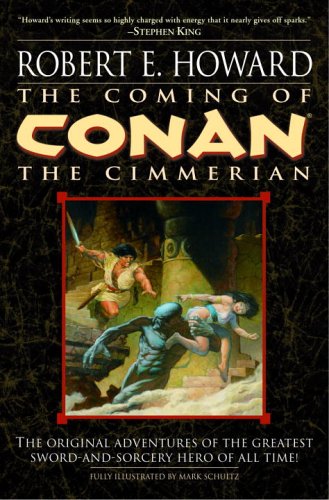 Bill Ward and I are reading our way through the Del Rey Robert E. Howard collection The Coming of Conan. This week we’re discussing “The Vale of Lost Women.” We hope you’ll join in!
Bill Ward and I are reading our way through the Del Rey Robert E. Howard collection The Coming of Conan. This week we’re discussing “The Vale of Lost Women.” We hope you’ll join in!
Howard: In the essay that concludes the book, “Hyborian Genesis,” Robert E. Howard scholar Patrice Louinet gives the probable background of this tale, recounting how Howard had grown more and more interested in tales of the American Southwest. Apparently at about the time he wrote this he’d begun to exchange tales with writer August Derleth, and recounted to him the story of the abduction of Cythia Ana Parker by the Commanche. Louinet speculates that this story was the inspiration behind “Vale.”
Last week I wrote that “Vale” was a rejected Conan story, but in actuality there’s no record that it was ever submitted. It might be that REH himself understood it wasn’t up to snuff and never bothered to turn it over for consideration.
Bill: That would not surprise me.
Howard: It starts strongly enough, or at least, as strong as these lesser Conan tales that have dominated the last few we’ve read. Once again we see Conan through the eye of a woman from civilized lands. Louinet wrote that “As to the racial overtones of the story, while the violent ethnocentrism of the tale is understandable when we recognize its origin in the nineteenth-century Anglo-Saxon settler viewpoint, with the blacks standing in for Indians, it makes for unsettling reading for the modern audience.”
Indeed it does. Those references aren’t so onerous in the first section, and the story was promising enough that I lived in hope that I had mis-remembered my feelings. Conan at least is in fine form in the opening, and REH once again sets the stage and the situation before Conan strides into view. It’s understandable he might be motivated by a beautiful woman who looks more like someone from his background than those who surround him, but some of the white/black discussion is cringe inducing.
Bill: It is indeed. This is most definitely not the story to hand to a Conan virgin, and it almost doesn’t even seem like the Conan we’ve grown to know in the last dozen stories.
Howard: Still, I could look past that and name those issues of the story simply as a product of its time if the rest of the tale were enjoyable, but it swiftly goes downhill after Livia’s discussion with Conan. In section III we witness Conan leading a brutal massacre of those hosting him and his warriors. And that might be expected of him, but I really don’t want to read about that. Following is the afterthought of a supernatural menace.
It’s just… tacked on. We don’t learn about the Vale of Lost Women until the section/chapter when Livia wanders off, and then she’s put into a sort of trance by the flowers and the brown women with glowing eyes as a bat-winged thing from cosmic gulfs that “lurk as thick as fleas outside the belt of light which surrounds this world” descends to transform or ravish or devour her. Fortunately Conan rides up and dispatches it in about two paragraphs. He’s more bothered by an ape than this thing of horror from beyond ken. He’s so jaded to horrors from beyond time that he mentally shrugs at them, which definitely weakens any feel of dread or tension.
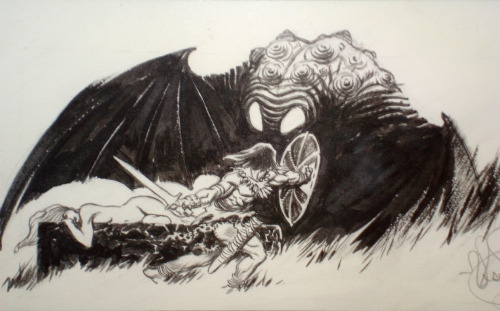 Bill: I think “Vale” fails on most fronts, beyond providing interest for the REH enthusiast, and I almost think my favorite thing about it was Conan again using a beefbone to clean someone’s clock. There isn’t much said here about civilization and barbarism, beyond maybe the sentiment that some barbarians are worse than others and, of course, that Conan can find use for his talent for violence anywhere he goes. Structurally the whole story is kind of lopsided, and the second half, the actual Ovidian Vale of Lost Women, is disappointing: especially, as you say, in the nonchalant way Conan views the “rather common” Devil of the Outer Dark. I think the whole story really feels like REH running some ideas up the old flagpole to see how they work. Eventually those ideas, themes drawn from the American West, do work, just not here.
Bill: I think “Vale” fails on most fronts, beyond providing interest for the REH enthusiast, and I almost think my favorite thing about it was Conan again using a beefbone to clean someone’s clock. There isn’t much said here about civilization and barbarism, beyond maybe the sentiment that some barbarians are worse than others and, of course, that Conan can find use for his talent for violence anywhere he goes. Structurally the whole story is kind of lopsided, and the second half, the actual Ovidian Vale of Lost Women, is disappointing: especially, as you say, in the nonchalant way Conan views the “rather common” Devil of the Outer Dark. I think the whole story really feels like REH running some ideas up the old flagpole to see how they work. Eventually those ideas, themes drawn from the American West, do work, just not here.
Howard: I’ll turn a last time to Louinet’s analysis, which pretty much sums up my own impression. Howard might have been inspired by that tale from the American Southwest, but that inspiration was diluted “between the unconvincing supernatural threat and Livia’s penchant for nakedness.” If you have that comment in mind while you’re reading you can’t help but smile wryly. The word “naked” is used a lot to describe Livia, sometimes twice in the span of a couple of sentences, and she’s constantly disrobing or having clothes ripped from her. Maybe it should have been submitted to that lost pulp mag, Spicy Conan Stories.
Bill: I found the descriptions of her mounting hysteria more odious, very purple and over-the-top. It is a case in which having a female point of view character as foil to Conan backfired a bit on REH, who had been doing it so well in previous tales. Livia is the worst of these characters — oddly, she’s only one letter shy of Olivia, who is one of the best.
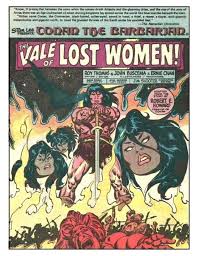 Howard: Interestingly enough, when it was adapted into a Conan comic during the original Roy Thomas Marvel run, it works fairly well, probably because some of the most egregious lines can be cut and the fight lengthened.
Howard: Interestingly enough, when it was adapted into a Conan comic during the original Roy Thomas Marvel run, it works fairly well, probably because some of the most egregious lines can be cut and the fight lengthened.
Bill: I can see how that would work; with a few tweaks you have an entertaining adventure. As it stands, though I think “The Vale of Lost Women” is of more worth for its reflection of REH’s evolving inspirations and methods than as an exciting chapter in Conan’s life.
Howard: I don’t think we’re alone in our opinions. Unlike all the other Conan stories we’ve revisited, even art was a challenge to find for this recap.
Next week we’ll take a look at “The Devil in Iron.” I have this one confused in my memory with “Iron Shadows in the Moon,” and it’s one I haven’t re-read before. I’m looking forward to seeing how it holds up.
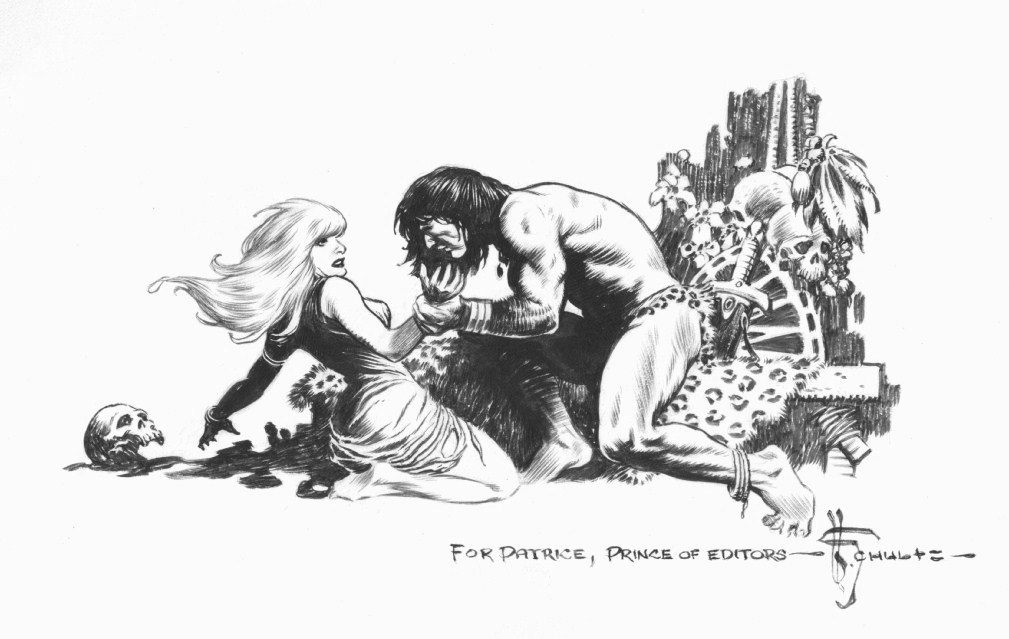
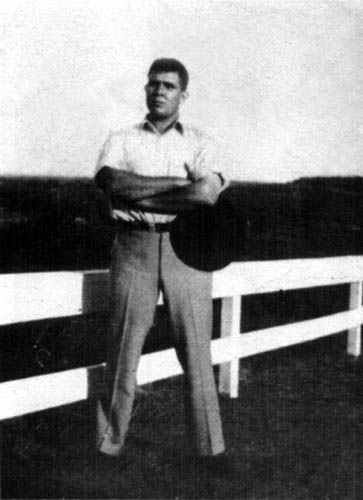
10 Comments